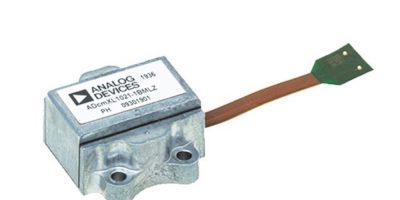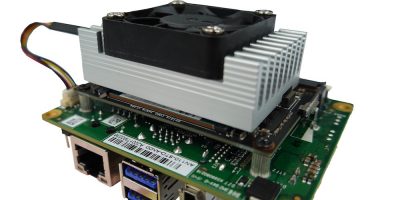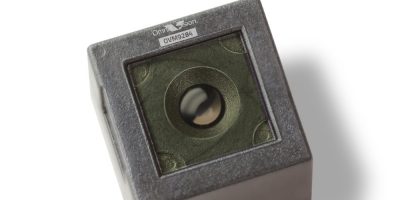Based on Analog Devices’ microelectromechanical system (MEMS) sensor technology, the ADcmXL1021-1 module is a sensing system that monitors for early indications of possible machine fatigue and failure. It can be used to support maintenance in industrial and transportation equipment to help reduce repair costs and maintain a high level of productivity.
The ADcmXL1021-1 vibration sensor by Analog Devices is now available from Mouser Electronics.
The single z-axis vibration monitoring subsystem is designed to simplify the development of smart sensor nodes in condition-based monitoring (CBM) systems. It incorporates a wide-bandwidth, low-noise MEMS accelerometer and an ADC, signal processing, data buffers, record storage and a user interface that easily works with most embedded processors, says Mouser. The ADcmXL1021-1’s signal processing includes high-speed data sampling (220ksamples per second), 4096 time sample record lengths, filtering, windowing, fast Fourier transform (FFT), user-configurable spectral or time statistic alarms, and error flags.
The ADcmXL1021-1 uses an ADXL1002 MEMS accelerometer with low noise density (26microg/√Hz) to support excellent resolution. The device’s wide DC bandwidth (10kHz) to enable tracking of key vibration signatures on many machine-based platforms. The ADcmXL1021-1 offers a high operating input range of ±50 g, making it suitable for vibration measurements in high-bandwidth industrial IoT (IIoT) and industry 4.0 applications such as vibration analysis systems that monitor and diagnose machine or system health, as well as safety shut off sensing.
Mouser also stocks the EVAL-ADCM-1 evaluation kit, which includes the ADcmXL1021-1 module, a breakout board, an ADcmXL interface board, a Cypress Semiconductor EZ-USB FX3 board and necessary cables. Engineers can connect the kit to a PC to access evaluation software for configuration of the module, register setup, data display, and data logging.
Mouser is an authorised distributor, focused on the rapid introduction of new products and technologies. It offers products from over 800 semiconductor and electronic component manufacturers and claims to stock the world’s widest selection of the latest semiconductors and electronic components for the newest design projects. The distributor’s website is continually updated and offers advanced search methods to help customers quickly locate inventory. It also houses data sheets, supplier-specific reference designs, application notes, technical design information, and engineering tools.







